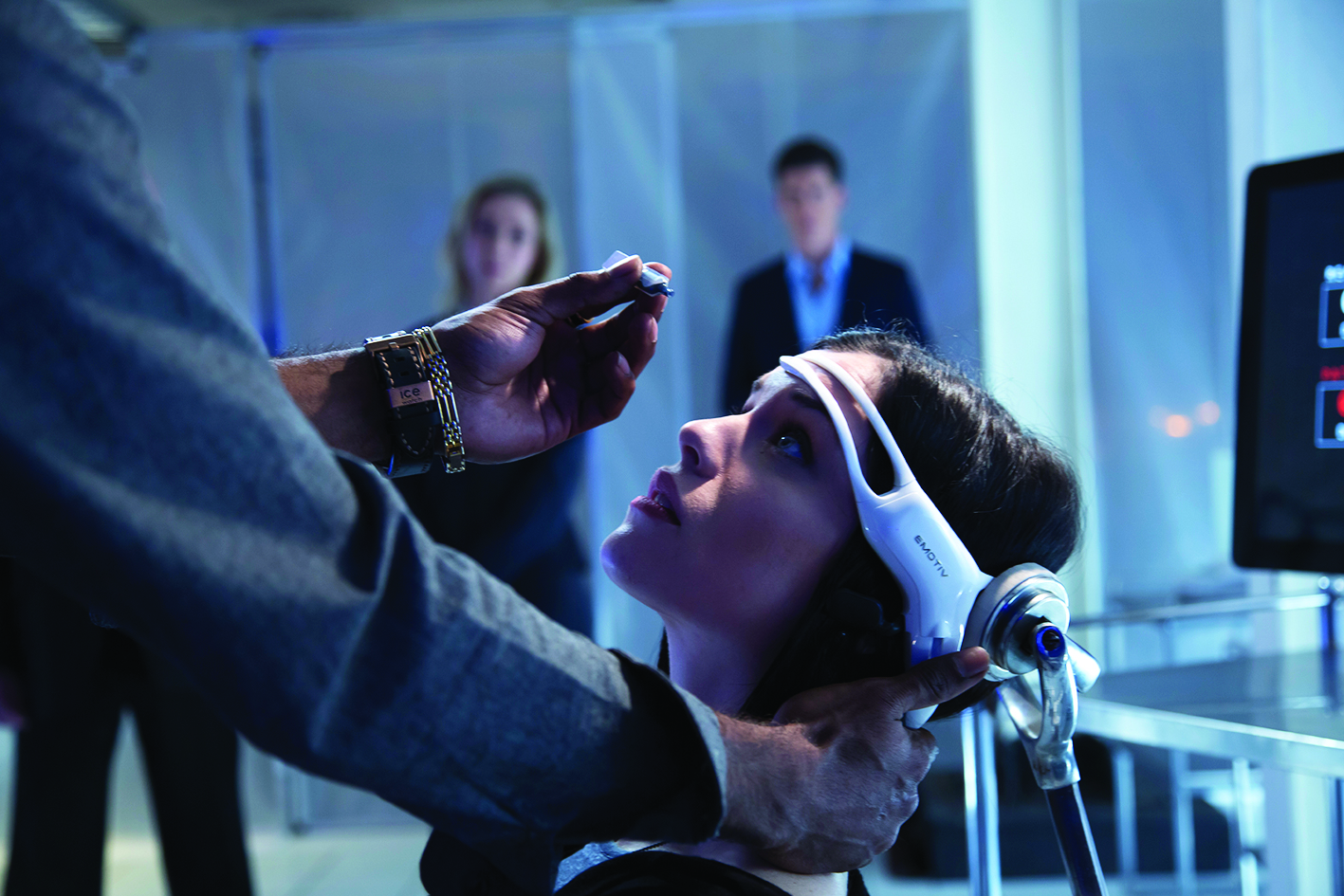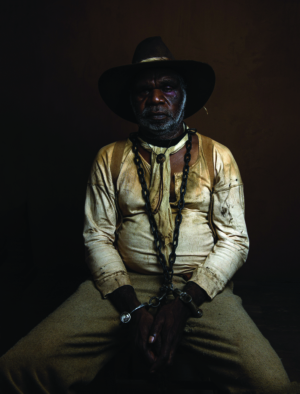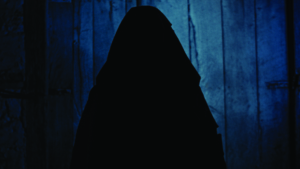A young man and woman sit on a beach during a lull in a free-diving session. Side by side, they stare companionably out to sea. She coaxes him back into the water … then wakes up abruptly in a high-rise city apartment, an inky tear rolling down her cheek. This is OtherLife, a 2017 Australian science fiction film co-written and directed by Ben C Lucas.
Brilliant software engineer Ren Amari (Jessica De Gouw) has devised a revolutionary nanotechnology-based biological program. Administered as a black fluid in single-dose eye-dropper vials, it creates vivid virtual-reality experiences that last only seconds in real time but feel like hours to the user. Ren and her business partner, Sam Murphy (TJ Power), are about to launch it as a commercial product branded ‘OtherLife’, enabling consumers to cram new experiences and physical capabilities into their busy lives.
But the pair have competing secrets. Ren’s real motivation for combining her neuroscientist father’s research with her coding skills is to create a software ‘patch’ for the diving-related brain injury that has left her brother, Jared (Liam Graham), in a coma. Days before OtherLife’s launch, Ren is still covertly working on a custom version intended specifically for him. Despite the neurological risks of overusing these substances, she has clocked up hundreds of hours testing sample after sample on herself. Meanwhile, behind Ren’s back, Sam is negotiating a lucrative joint venture with the Department of Corrections to license OtherLife as a virtual prison, through which criminals serve long sentences in their own minds that take only minutes in the real world. Upon discovering this, Ren is aghast. When her colleague and lover Danny (Thomas Cocquerel) suffers a catastrophic seizure after accidentally taking one of her secret samples, Sam coerces Ren into spending one year in virtual solitary confinement to test the carceral software, in exchange for hushing up the scandal.
The story is based loosely on Kelley Eskridge’s 2002 novel Solitaire. Initially adapted for the screen by Gregory Widen, the script was developed further by Lucas, in collaboration with Eskridge, narrowing its scope from an expansive, effects-led US blockbuster to a low-budget psychological thriller set in Australia. Lucas explains that he was attracted to one key idea in Solitaire:
fantasy and reality are chemically identical as far as your brain is concerned […] the things we experience and our memories get filtered down into noughts and ones in the backs of our brains but so do our dreams and hopes and ambitions.[1]Ben C Lucas, quoted in Glen Falkenstein, ‘Director Ben Lucas on the OtherLife World Premiere’, FalkenScreen, 16 June 2017, <https://falkenscreen.com/2017/06/16/director-ben-lucas-on-the-otherlife-world-premiere/>, accessed 8 November 2017.
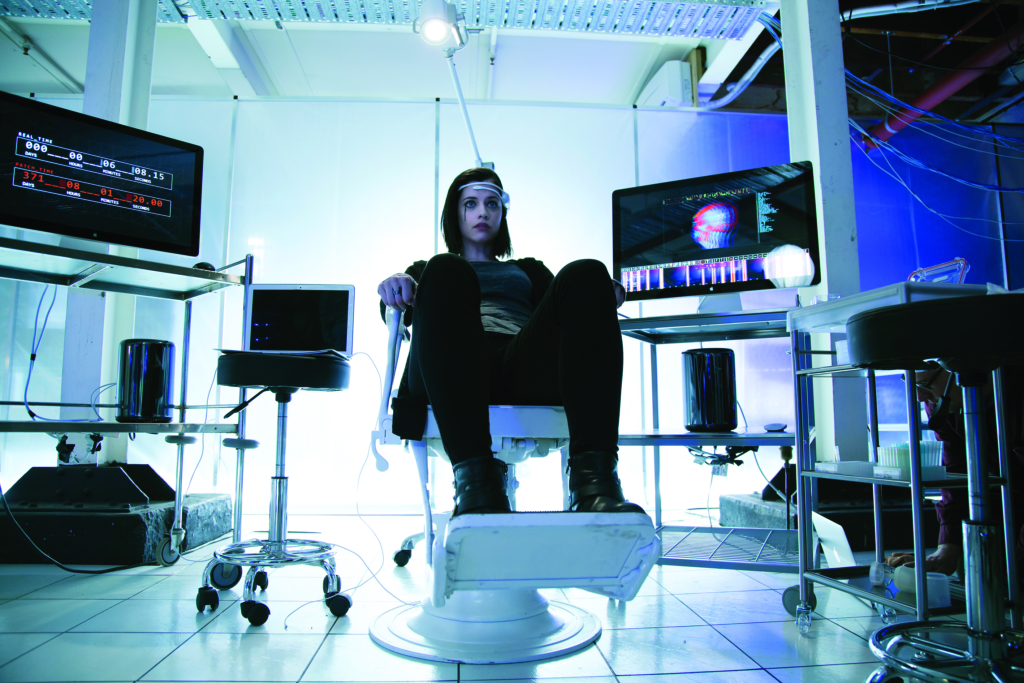
Representing subjective experience
Lucas’ feature debut, Wasted on the Young, was one of 2010’s most underrated films: coolly accomplished on its small budget, it intuitively understood the cyborg-like existence of being a teenager in an always-online culture. Leaking from mobile devices, text messages popped up on screen as characters sent and received them, placing the audience within a subjective narrative space.
Film is fundamentally an observational medium and, as such, has struggled to represent subjective experience. Classical cinema seeks to bridge this distance by encouraging audiences to identify vicariously with characters’ experiences and emotions through the techniques that suture action and spectatorship: the close-up, the shot / reverse shot, the voiceover, the flashback. More impressionistic filmmaking attempts to position both character and viewer in a shared but disembodied space. Montages, blurs, cuts and dissolves evoke states of consciousness and perception: pondering, remembering, confusion, agitation, passing out or coming to. Likewise, dynamic camera movements such as tilts, pans and tight tracking shots mimic what a character sees as they move through a space.
But what’s often called the first-person point-of-view (POV) style incorporates the character’s own body into the frame, creating a sense of solid, coherent corporeality. Legs and feet visibly propel camera movements; arms and hands intrude into the shot to handle props and touch characters. Other actors perform to-camera, as if to the protagonist. Our familiarity with home movies, TV journalism and first-person-shooter videogames has naturalised this approach, but the awkwardness of Lady in the Lake (Robert Montgomery, 1947) – frequently cited as the first film entirely shot from its protagonist’s perspective[2]Nico Lang, ‘A Quick History of the First-person Film’, Consequence of Sound, 7 April 2016, <https://consequenceofsound.net/2016/04/a-quick-history-of-the-first-person-film/>, accessed 8 November 2017. – should remind us that it’s a claustrophobic, disciplining view.
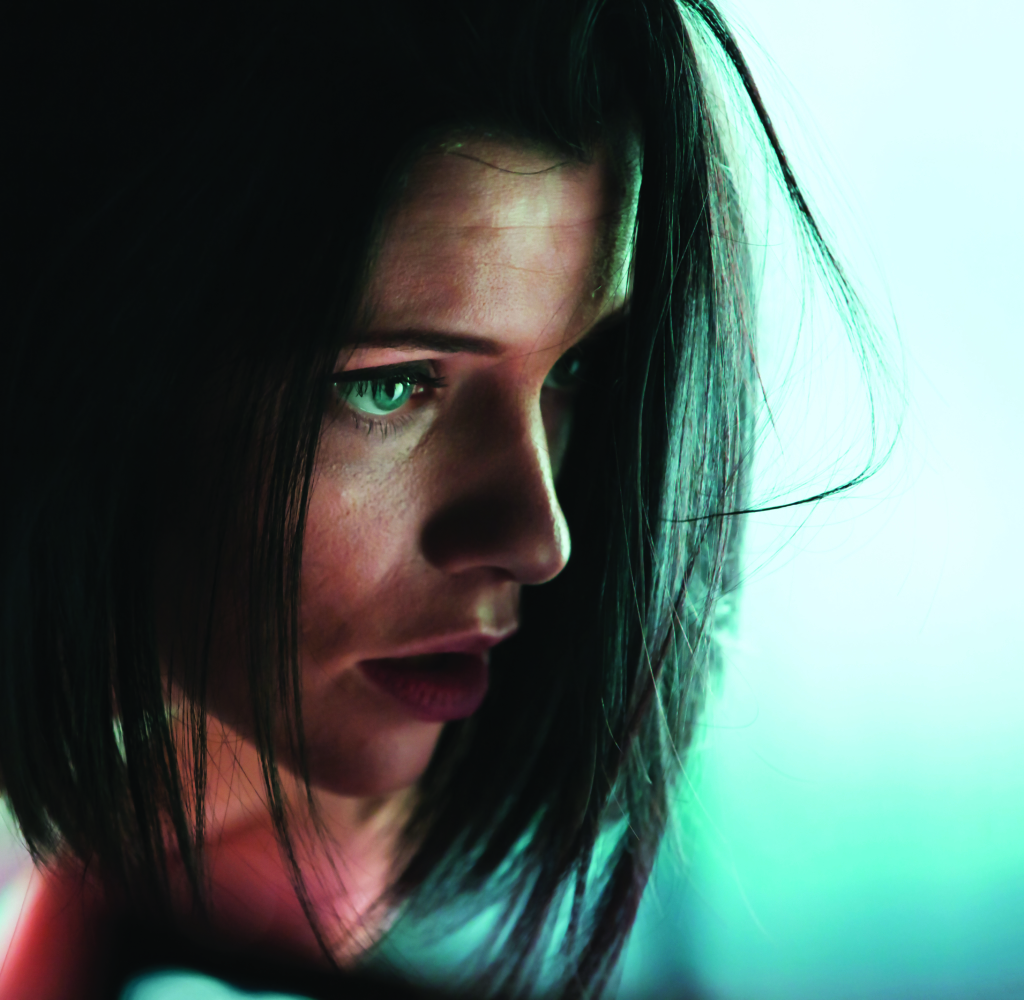
A true first-person perspective might be a free-floating bird’s-eye view, or a delirious, dancing camera movement that circles actors within a space. Instead, what we have in Lady in the Lake and later works like it is a second-person perspective. As Film School Rejects critic Christopher Campbell observes, the style is ‘a terrible reminder that we’re […] like someone strapped to the back of the protagonist, without our own free will’.[3]Christopher Campbell, ‘Why Are Movies Shot Fully in “First-person POV” Such a Bad Idea?’, Film School Rejects, 3 November 2014, <https://filmschoolrejects.com/why-are-movies-shot-fully-in-first-person-pov-such-a-bad-idea-f9d3955b6c05/>, accessed 8 November 2017. This is cinematic code for incarceration. It’s used in the biopic The Diving Bell and the Butterfly (Julian Schnabel, 2007), whose protagonist suffers from locked-in syndrome. And Get Out (Jordan Peele, 2017) finds existential horror in the forced spectatorship of ‘the sunken place’, where black people live out their days helplessly watching their bodies being puppeteered by white people.
Kathryn Bigelow’s Strange Days (1995) extensively incorporates POV-style footage in ways that make the audience uncomfortably complicit in racialised and sexualised violence. In this science fiction film, set at the then-significant turn of the millennium, SQUID – Superconducting Quantum Interference Device – headsets record the wearer’s sensations and emotions, and the tapes are traded as pornography … or used as evidence of police brutality. Rather than glamorise the cinematic interface between ‘real’ and ‘virtual’ subjective experiences, Bigelow asks the viewer to consider how embodied subjectivity might intersect with systemic power and political protest – a theme for which her later films Zero Dark Thirty (2012)[4]See Jane Mayer, ‘Zero Conscience in Zero Dark Thirty’, The New Yorker, 14 December 2012, <https://www.newyorker.com/news/news-desk/zero-conscience-in-zero-dark-thirty>, accessed 8 November 2017. and Detroit (2017)[5]See Angelica Jade Bastien, ‘Detroit’, RogerEbert.com, 28 July 2017, <https://www.rogerebert.com/reviews/detroit-2017>, accessed 8 November 2017. have been strongly criticised.
In OtherLife, Lucas’ use of what we could call ‘carceral subjectivity’ is much milder. He sketches boundaries between feeling liberated and entrapped, and glosses over the roles of capitalism and the state in determining freedom from constraint.
In OtherLife, Lucas’ use of what we could call ‘carceral subjectivity’ is much milder. He sketches boundaries between feeling liberated and entrapped, and glosses over the roles of capitalism and the state in determining freedom from constraint. Monitored by her colleague Byron (Clarence Ryan), Ren is testing adventure-sport simulations: skydiving, rock climbing, snowboarding. She reclines in a seat resembling a dentist’s chair, a white, rubbery EEG headset resting on her brow (‘paired’, like a Bluetooth device, with Byron’s computer). Byron drips the software into her eye and, in extreme close-up, the black fluid disperses across her cornea. The screen dissolves into kaleidoscope-like fragments, then resolves; we are now inside a luxurious alpine chalet. We hear Ren’s loud breathing and see her arms flexing experimentally as they rest on her legs. In these early adventure sequences, segments of POV footage mingle with more conventional shots, montaged with the verve of tourism commercials. Helicopter shots of Ren in action. Extreme close-ups of her hand grasping the top of a cliff. Medium-close-up reaction shots of her surveying her surroundings with calm pleasure. Powdery snow spattering the lens as she flamboyantly stops her snowboard.
But a glitch in the code sends the simulation into a recursive loop. Rather than waking up in her office, Ren sees her own body back in the chalet again, and then again. Six days into a one-day experience, the snowy landscape begins to distort and dissolve, Ren trying to stave off panic by muttering to herself, ‘It’s just code. It’s just code.’
Later in the film, when Ren has reluctantly agreed to be virtually incarcerated, Lucas entraps the viewer in a more deliberately oppressive series of POV shots. Byron looms in close-up, and a black OtherLife droplet falls from the ampoule he’s holding, darkening the entire frame. We spend much longer with Ren’s perspective this time: she stretches her legs, touches the prison uniform she now wears, and inspects her cell as the camera tilts hesitantly up. As she registers its smallness, the camera slowly dollies out so that cell and occupant appear tiny, floating lost in black space.
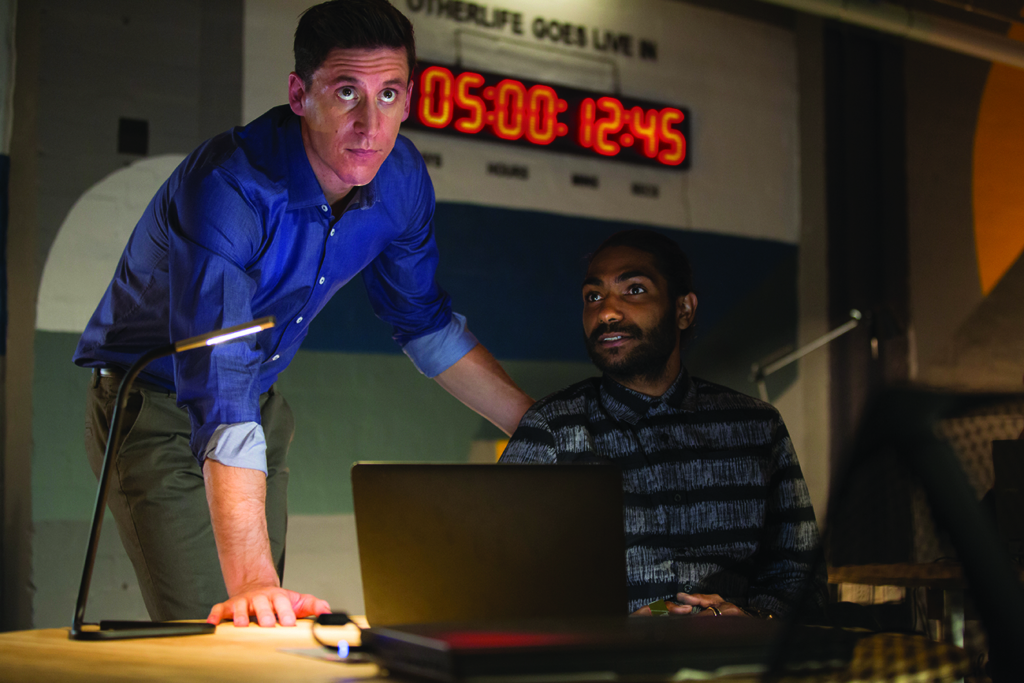
Trauma and technology: Sci-fi gets personal
There’s a faint whiff of expired zeitgeist about OtherLife, from its fin-de-siècle technology-based premise and Ren’s vaguely Japanese-sounding name, to De Gouw’s clichéd ‘hacker’ styling – all bobbed ebony hair, slouchy monochrome outfits and smoky eye make-up. Perhaps this is a vestige of the source novel. The turn of the twenty-first century was the heyday of the virtual-reality subgenre, which included the Matrix cycle (The Wachowskis, 1999–2003), The Thirteenth Floor (Josef Rusnak, 1999), eXistenZ (David Cronenberg, 1999) and The Cell (Tarsem Singh, 2000). Subsequent attempts to realise the Solitaire adaptation foundered in the wake of competitors like Inception (Christopher Nolan, 2010).[6]Travis Johnson, ‘Ben C. Lucas: Breathing Life into OtherLife’, FilmInk, 25 October 2017, <https://filmink.com.au/ben-c-lucas-breathing-life-otherlife/>, accessed 8 November 2017.
Lucas was determined to resist the ‘lazy’ science fiction trope of demonising technology and moving towards a denouement in which the protagonist concludes it must be destroyed:
I really wanted to make sure that we didn’t make the technology the villain. The business of developing and releasing it was the villain. I think that’s more realistic. I do think commerce gets in the way of innovation.[7]Ben C Lucas, quoted in Mandy Griffiths, ‘Sydney Film Festival: Ben C. Lucas – OtherLife’, Moviehole, 15 June 2017, <http://moviehole.net/2017119082sydney-film-festival-ben-c-lucas-otherlife>, accessed 8 November 2017.
One of the most enjoyable things about OtherLife is that Lucas understands the ritualistic pleasure in the genre’s interface between bodies, hardware and software. The snap-to-open ampoules, the blackness of the OtherLife serum – so reminiscent of the alien ‘black oil’ from The X-Files – and the sinuous white fingers of the EEG headset are all crucial to the characters’ transitions between real and virtual worlds.
But Ren’s obsessive innovation, in a bid to recode Jared’s fateful accident and rouse him from his coma, is at least as problematic as Sam’s ethically shady commercial activities. The spiralling plot twists that follow Ren’s escape from her virtual prison force her to confront her previous selfishness: her callous treatment of Danny; her theft of her father’s research, which she had patented; and her refusal to respect his wish that Jared’s life support be switched off. Particularly, Ren has refused to consider what Jared himself might want.
Science fiction frequently depicts those immersed in technology – whether they be developers, vendors or consumers – as flawed, traumatised and ultimately very lonely individuals who destroy their ‘real’ intimate relationships in the pursuit of mediatised or abstracted ones. The Australian film Errors of the Human Body (Eron Sheean, 2012), in particular, uses its protagonist’s crisis to explore the intersections of trauma, ethics and innovation. Geneticist Geoff Burton (Michael Eklund), who lost his baby son to a rare genetic disease, has built his entire life around seeking a cure. But when he stumbles across a secret virus lab maintained by a creepy colleague, he devastatingly ends up becoming patient zero.
Similarly, ‘The Entire History of You’, a 2011 episode of speculative TV series Black Mirror, is set in a near-future in which most people have a computer implant (known as a ‘grain’) that records their first-person perceptions for later playback. Liam (Toby Kebbell) suspects wife Ffion (Jodie Whittaker) of having cheated on him, and obsessively combs his – and their – digital memories for evidence. In one depressing scene, Liam and Ffion have sex while each watches a previous encounter on their respective grains (recalling a scene from Strange Days in which Ralph Fiennes’ Lenny pathetically rewatches a steamy meeting with Juliette Lewis’ Faith). In the episode’s final moments, Liam wanders through his darkened, empty home, compulsively comparing it to the same space during happier times. Of course, we humans will always find ways to sabotage ourselves and one another, but Black Mirror’s point is that media technologies enable and accelerate our worst impulses. Unlike the fallible, suggestible human brain, the impeccably accurate grain footage allows Liam no refuge from a truth he both craves and dreads.
But OtherLife is more optimistic than its sci-fi precedents. By the end, Ren has successfully treated her own trauma. She has coded her memories and desires into the digital prison of the carceral software, transforming the essential loneliness of the leisure experiences enabled by OtherLife into opportunities to make peace with her past and mend broken relationships.
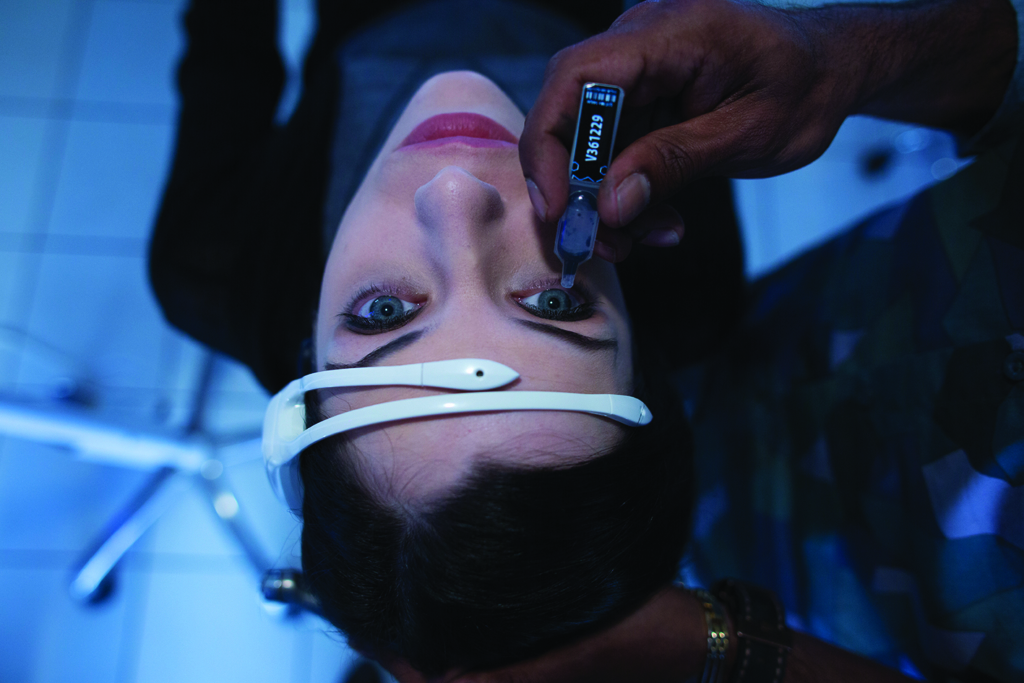
How Australian is OtherLife?
After screenings at the Sydney, Melbourne and CinéfestOZ festivals, OtherLife was released worldwide via streaming platform Netflix. The film’s virtual-reality narrative, as well as its international production history, situates it within a cosmopolitan strand of Australian genre filmmaking that is less concerned with national identity than with exploring broader philosophical and ethical concerns.
Such tonally neutral Australian films can be appealingly atmospheric, yet not quite satisfying in their third acts. Reviewing Errors of the Human Body for Metro, for instance, Alexandra Heller-Nicholas observes that it ‘is a not-horror, a not-thriller, a not-melodrama, precisely because it sets up expectations regarding each and then deliberately ignores them’.[8]Alexandra Heller-Nicholas, ‘Laboratory Experiment: Errors of the Human Body’, Metro, no. 175, Summer 2013, p. 36. Likewise, the Melbourne-filmed existential mystery Exit (Marek Polgar, 2011) presents an otherwise-ordinary cityscape as a maze to escape, a narrative puzzle to be solved, then resists any illuminating answers.
The film’s virtual-reality narrative, as well as its international production history, situates it within a cosmopolitan strand of Australian genre filmmaking that is less concerned with national identity than with exploring broader philosophical and ethical concerns.
Industry discourse is fiercely divided over whether local filmmakers should be pursuing international audiences (who dislike excessively parochial Aussie stories), local multiplex audiences (who enjoy traditional Australian imagery and lifestyles) or arthouse audiences (who respond to ‘dark, depressing’ dramas). Genre has been treated as a ‘silver bullet’ that can appeal to all of these viewers at once, even though the Australian screen industries lack the infrastructure to support high-budget genres such as science fiction.[9]Mark David Ryan, ‘A Silver Bullet for Australian Cinema? Genre Movies and the Audience Debate’, Studies in Australasian Cinema, vol. 6, no. 2, 2012, pp. 141–57. Increasingly, however, local sci-fi – despite shoestring budgets – is being defined by innovative scripts and striking visuals. In the case of Hugh Sullivan, writer/director of sci-fi romance The Infinite Man (2014), the clever US indie Primer (Shane Carruth, 2004) offered a template for how to ‘make a time travel film on a very low budget’, leading him ‘to find something quite unique’ in his own story.[10]Hugh Sullivan, quoted in Mark Juddery, ‘The Beach at the End of the World: Aussie Science Fiction’s New Wave’, The Guardian, 31 July 2014, <https://www.theguardian.com/film/australia-culture-blog/2014/jul/31/australian-new-science-fiction-films>, accessed 8 November 2017.
Lucas, too, felt OtherLife ‘could punch above its weight […] We could make this film and we could make it interesting and cool with the resources we had available.’[11]Ben C Lucas, ‘Writer/Director’s Statement’, in Carrera Press Agency, OtherLife press kit, 2017, p. 5. And it was always going to be a Perth story: ‘Not just shoot there but also be specifically from there, unashamedly’, he has said.[12]Lucas, quoted in Griffiths, op. cit.
Perth is often portrayed as a place of insularity and isolation.[13]See Kate Leaver, ‘Fears of “Cultural Isolation”’, Weekend Courier, 2 September 2015, <https://www.communitynews.com.au/weekend-courier/news/fears-of-cultural-isolation/>, accessed 8 November 2017. Its uncanny frontier atmosphere was put to disturbing use in apocalyptic drama These Final Hours (Zak Hilditch, 2013), which shows sun-blasted suburbia gone feral with violent anarchy as the asteroid that’s already annihilated the rest of the world approaches Western Australia. The same baking heat and moral decay suffuse serial-killer tale Hounds of Love (Ben Young, 2016). Despite this reputation, filmmakers often shoot in Western Australia because of its natural, rugged beauty. Yet OtherLife uses Perth’s sleek emptiness to speculate that the city’s early-2010s mining boom could have funded a Silicon Valley–style technology hotspot. From Ren’s glassed-in apartment building to the subterranean bunker where her start-up is based, it’s striking to see Perth’s sunny openness turned in on itself; it’s a clue for local audiences that there’s something a bit glitchy about the code of Ren’s world.
The ocean – so often the focus of Perth stories – bookends OtherLife. At the start of the film’s third act, Ren allows herself to be swamped by a sparkling wave; it swallows her up in extreme slow motion. And then, in the final scene, she returns to gaze over the water, finally at peace now that she has reconciled the isolation and obsession of her ‘real’ life.
Endnotes
| 1 | Ben C Lucas, quoted in Glen Falkenstein, ‘Director Ben Lucas on the OtherLife World Premiere’, FalkenScreen, 16 June 2017, <https://falkenscreen.com/2017/06/16/director-ben-lucas-on-the-otherlife-world-premiere/>, accessed 8 November 2017. |
|---|---|
| 2 | Nico Lang, ‘A Quick History of the First-person Film’, Consequence of Sound, 7 April 2016, <https://consequenceofsound.net/2016/04/a-quick-history-of-the-first-person-film/>, accessed 8 November 2017. |
| 3 | Christopher Campbell, ‘Why Are Movies Shot Fully in “First-person POV” Such a Bad Idea?’, Film School Rejects, 3 November 2014, <https://filmschoolrejects.com/why-are-movies-shot-fully-in-first-person-pov-such-a-bad-idea-f9d3955b6c05/>, accessed 8 November 2017. |
| 4 | See Jane Mayer, ‘Zero Conscience in Zero Dark Thirty’, The New Yorker, 14 December 2012, <https://www.newyorker.com/news/news-desk/zero-conscience-in-zero-dark-thirty>, accessed 8 November 2017. |
| 5 | See Angelica Jade Bastien, ‘Detroit’, RogerEbert.com, 28 July 2017, <https://www.rogerebert.com/reviews/detroit-2017>, accessed 8 November 2017. |
| 6 | Travis Johnson, ‘Ben C. Lucas: Breathing Life into OtherLife’, FilmInk, 25 October 2017, <https://filmink.com.au/ben-c-lucas-breathing-life-otherlife/>, accessed 8 November 2017. |
| 7 | Ben C Lucas, quoted in Mandy Griffiths, ‘Sydney Film Festival: Ben C. Lucas – OtherLife’, Moviehole, 15 June 2017, <http://moviehole.net/2017119082sydney-film-festival-ben-c-lucas-otherlife>, accessed 8 November 2017. |
| 8 | Alexandra Heller-Nicholas, ‘Laboratory Experiment: Errors of the Human Body’, Metro, no. 175, Summer 2013, p. 36. |
| 9 | Mark David Ryan, ‘A Silver Bullet for Australian Cinema? Genre Movies and the Audience Debate’, Studies in Australasian Cinema, vol. 6, no. 2, 2012, pp. 141–57. |
| 10 | Hugh Sullivan, quoted in Mark Juddery, ‘The Beach at the End of the World: Aussie Science Fiction’s New Wave’, The Guardian, 31 July 2014, <https://www.theguardian.com/film/australia-culture-blog/2014/jul/31/australian-new-science-fiction-films>, accessed 8 November 2017. |
| 11 | Ben C Lucas, ‘Writer/Director’s Statement’, in Carrera Press Agency, OtherLife press kit, 2017, p. 5. |
| 12 | Lucas, quoted in Griffiths, op. cit. |
| 13 | See Kate Leaver, ‘Fears of “Cultural Isolation”’, Weekend Courier, 2 September 2015, <https://www.communitynews.com.au/weekend-courier/news/fears-of-cultural-isolation/>, accessed 8 November 2017. |
